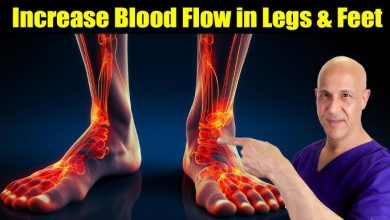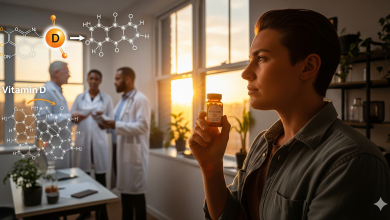Best Vitamins for Teenage Girl Hormones: Support Healthy Growth and Balance

Adolescence is a wild, important time — bodies grow fast, moods swing, sleep patterns change, and hormones are steering much of the ship. Good nutrition lays the foundation for healthy puberty, balanced hormones, and long-term wellbeing. While food should always come first, certain vitamins and minerals are especially important for teenage girls because they support bone growth, mood, menstrual health, energy, and the hormonal systems that regulate development. This article explains which nutrients matter most, why they help hormones, food sources, safety notes, and practical tips parents and teens can use right away.
Quick overview: what hormones do during the teen years
During puberty, the body increases production of sex hormones (estrogen, progesterone), growth hormones, and adrenal hormones. These chemical signals:
- Trigger breast development, menstrual cycles, and reproductive maturation.
- Drive the growth spurt and bone development.
- Influence mood, sleep, appetite, skin and hair changes.
All of these processes need calories and the right building blocks — energy, protein, vitamins and minerals — so deficiencies can slow growth, worsen fatigue, and interfere with normal menstrual function. A balanced diet is the most reliable way to support hormones, but targeted nutrients are worth knowing about.
The top nutrients that matter for teenage girl hormones
Below are the vitamins and minerals most strongly tied to healthy puberty, menstrual health, mood and bone development — plus what they do, food sources, and safety notes.
1. Iron — supports energy and healthy periods
Why it helps hormones: Iron is needed to make hemoglobin (oxygen-carrying protein). During and after menarche (first periods), girls’ iron needs rise because of menstrual blood loss. Low iron (iron deficiency or iron-deficiency anemia) causes fatigue, impaired concentration, and can disrupt normal growth and development. WHO and pediatric guidance emphasize targeting iron in menstruating adolescents.
Good food sources: Red meat, poultry, fish, lentils, beans, tofu, fortified cereals, spinach. Vitamin C-rich foods (citrus, bell peppers, strawberries) help plant-based iron absorb better.
Typical guidance: Many authorities recommend screening for iron deficiency in teens with heavy periods, fatigue, or poor diet; in populations with high anemia rates, iron supplementation programs for menstruating adolescents are common. Don’t self-prescribe high-dose iron long-term without checking levels.
2. Vitamin D — bone health, mood, and possibly pubertal timing
Why it helps hormones: Vitamin D helps the body absorb calcium (critical for bone mineralization during the teen growth spurt) and influences immune and nervous system function. Emerging research also links vitamin D status with timing of puberty and overall endocrine health. Adequate vitamin D supports the environment that hormones need to do their job.
Good food sources & sun: Fatty fish (salmon, mackerel), fortified milk and plant milks, fortified cereals, egg yolks. Sunlight on skin produces vitamin D naturally — but climate, skin coverage and sunscreen use affect how much is made.
Typical guidance: Many teens have low vitamin D levels, especially in areas with little sun. If a blood test shows deficiency, a clinician may recommend supplements.
3. Calcium — bone strength during the growth spurt
Why it helps hormones: Estrogen during puberty promotes bone mineral accrual; calcium is the mineral that builds bone. Peak bone mass is set largely during adolescence, so calcium intake during teen years has lifelong implications. Calcium and vitamin D are a pair — both matter.
Good food sources: Milk and dairy, fortified plant milks, leafy greens (kale, collard greens), tofu set with calcium, almonds.
Typical guidance: Aim for routine calcium-rich meals and snacks. Supplements may be considered if dietary intake is low, but clinicians typically prefer food-first approaches.
4. Zinc — growth, skin, and hormone regulation
Why it helps hormones: Zinc plays roles in growth, immune function, and the biochemical pathways that make and regulate hormones. Deficiency can impair growth and delay sexual maturation in severe cases. Mild deficiency may affect appetite, mood and skin (acne).
Good food sources: Oysters and other shellfish, red meat, poultry, beans, nuts, whole grains.
Typical guidance: Zinc is included in many adolescent multivitamins and is generally safe in recommended amounts, but excess zinc can interfere with copper and cause side effects.
5. B Vitamins (B6, B12, folate) — energy, mood, and menstrual health
Why they help hormones: B vitamins support energy production, nervous system health, and biochemical reactions connected to neurotransmitters (mood regulators). Folate and B12 are important for cell division and blood health; B6 is sometimes used to help premenstrual symptoms though evidence varies. Good B-vitamin status supports overall physical and emotional resilience during hormonal changes.
Good food sources: Whole grains, beans, leafy greens (folate), eggs, dairy, lean meats (B12), fortified cereals.
Typical guidance: Most teens who eat a balanced diet get enough B vitamins. Vegetarian and vegan teens may need attention to B12 specifically.
6. Omega-3 fatty acids (EPA/DHA) — brain, mood and inflammation
Why they help hormones: Omega-3s don’t directly create sex hormones, but they support brain chemistry, reduce chronic inflammation, and can help mood stability — all very relevant during hormonal upheaval. Some studies show omega-3s can ease menstrual-related mood symptoms.
Good food sources: Fatty fish (salmon, sardines), walnuts, chia and flaxseeds (ALA — the plant form), and algae-based DHA for vegans.
Typical guidance: Two servings of fatty fish per week is a reasonable target for most teens who eat fish.
7. Vitamin A, C and E — general support (antioxidants and tissue health)
Why they help hormones: These vitamins are antioxidants and support immune function, skin health, and tissue repair. Vitamin C also helps iron absorption, indirectly supporting blood health during menstruation. Antioxidants can help the body deal with oxidative stress that may rise during times of rapid growth.
Good food sources: Colorful fruits and vegetables: carrots and sweet potatoes (A), citrus and peppers (C), nuts and seeds (E).
Multivitamin? When it makes sense — and when it doesn’t
Most healthy teenagers who eat regularly from a variety of food groups do not need a daily multivitamin. Food provides a mix of nutrients and beneficial non-nutrient compounds (fiber, phytochemicals) that pills can’t replicate. However, a multivitamin may be helpful when a teen:
- Eats very few fruits, vegetables or protein sources.
- Follows a restrictive diet (vegan, multiple food allergies) without planning.
- Has a diagnosed deficiency (iron, vitamin D, B12).
- Is a picky eater or has a medical condition affecting nutrient absorption.
If a multivitamin is chosen, select one formulated for teens (age-appropriate doses) and avoid exceeding upper intake levels. Some vitamins (A, iron, niacin) can be harmful in excess. Always review supplements with a pediatrician or family doctor.
Safety first: avoid over-supplementing
Supplements might seem harmless, but more is not always better:
- Iron: Too much iron can cause stomach upset and, in large doses, toxicity. Iron should be used based on testing or clinician advice.
- Vitamin A: Excess preformed vitamin A (retinol) can be toxic. Pregnant teens should avoid very high intakes.
- Zinc: High zinc doses can interfere with copper and immune function.
- Fat-soluble vitamins (A, D, E, K): These can build up in the body; don’t exceed recommended amounts.
Broadly: do not start high-dose single-nutrient supplementation without testing and medical guidance. A clinician can check vitamin D and iron status with simple blood tests and advise on safe supplementation.
Key sources and guidance on multivitamin safety and population needs are available from NIH Office of Dietary Supplements, Mayo Clinic and pediatric organizations.
Practical daily plans: food-first approach
Here’s a realistic, hormone-friendly day of eating for a teenage girl, emphasizing the nutrients above:
Breakfast
- Fortified whole-grain cereal or oatmeal with milk (calcium, vitamin D, B vitamins)
- A serving of berries (vitamin C)
- One egg or Greek yogurt (protein, B12)
Snack
- Apple with almond butter (healthy fat, vitamin E)
- Or carrot sticks with hummus (beta-carotene, iron from chickpeas)
Lunch
- Mixed greens salad with chickpeas or grilled chicken (iron, folate, protein)
- Whole grain bread or brown rice (B vitamins)
- Orange slices for vitamin C (helps iron absorption)
Afternoon Snack
- Handful of walnuts + a small piece of dark chocolate (omega-3 ALA, magnesium)
Dinner
- Baked salmon or tofu stir-fry (omega-3s or soy, calcium if tofu is set with calcium)
- Steamed broccoli or kale (calcium, vitamin K, vitamin C)
- Quinoa or sweet potato (B6, fiber)
Before bed
- Low-fat milk or soy milk if needed (calcium, vitamin D)
This pattern prioritizes whole foods, varied protein sources, fortified items where helpful (some milks and cereals), and fruit & veg to build nutrient coverage naturally.
When to test or see a clinician
Consider medical review if a teen has:
- Persistent fatigue, pallor, lightheadedness (possible anemia).
- Very heavy or irregular periods causing symptoms.
- Growth that seems delayed compared with peers.
- Mood changes that are severe or interfering with daily life.
- Dietary restrictions (vegan, multiple allergies) or clinical conditions (Crohn’s, celiac) that impair absorption.
A clinician can order targeted blood tests (iron studies, CBC, vitamin D, B12, thyroid tests) and recommend individualized treatment, including safe supplement dosing when needed. WHO and pediatric guidance support targeted iron supplementation programs where anemia prevalence is high — but decisions are best made with local clinical input.
Short summary: nutrient priorities for hormones in teen girls
- Iron — top priority once periods start; prevents fatigue and supports normal development.
- Vitamin D + Calcium — critical for bone development during the growth spurt.
- Zinc — supports growth and hormone-related pathways.
- B vitamins — support energy and mood.
- Omega-3s — support brain health and mood regulation.
Final tips for parents and teens
- Food first: Aim for a rainbow of whole foods, lean proteins, dairy or fortified alternatives, and regular meals. Supplements aren’t a shortcut for poor diet.
- Get screened if symptomatic: Blood tests are the only way to diagnose iron deficiency or vitamin D deficiency. Don’t guess.
- Choose teen-specific supplements if needed: If a multivitamin is used, pick one made for teens (right dose ranges, no excess iron unless indicated).
- Watch interactions: Calcium inhibits iron absorption if taken together; time supplements thoughtfully and follow clinician advice.
- Focus on sustainable habits: Sleep, stress reduction, physical activity and a diverse diet all influence hormones, mood and overall health.
Closing note
Hormonal changes in adolescence are normal and complex. Nutrition plays a powerful role, and certain vitamins and minerals (iron, vitamin D + calcium, zinc, B vitamins, omega-3s) deserve special attention for teenage girls. That said, supplementation should be individualized — guided by diet, symptoms, and, where appropriate, lab tests — because the wrong dose (or an unnecessary pill) can cause harm. If you’re worried about energy, periods, growth or mood, check with a pediatrician or family doctor who can run simple tests and make safe recommendations tailored to your teen.




